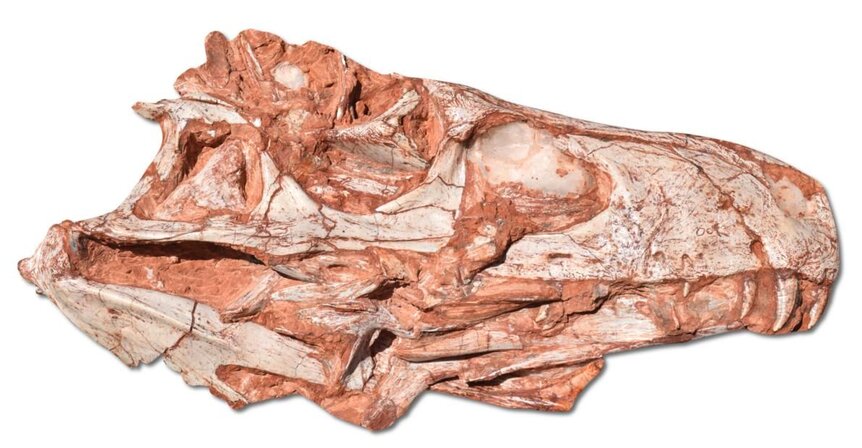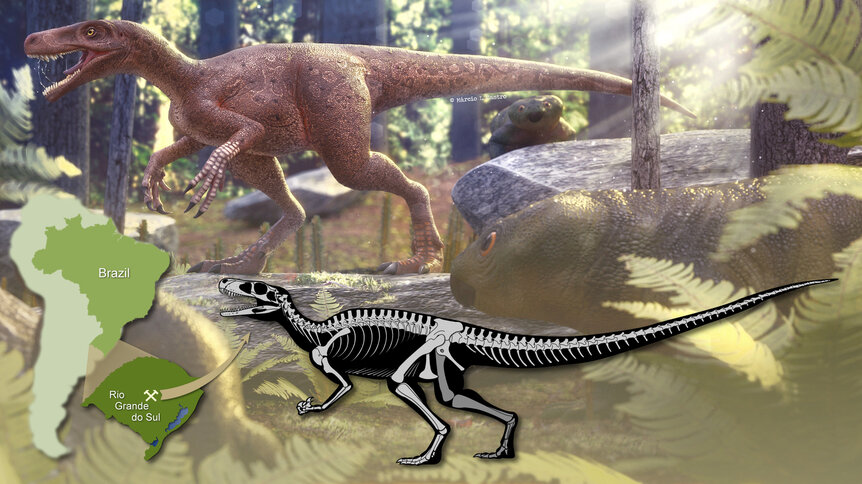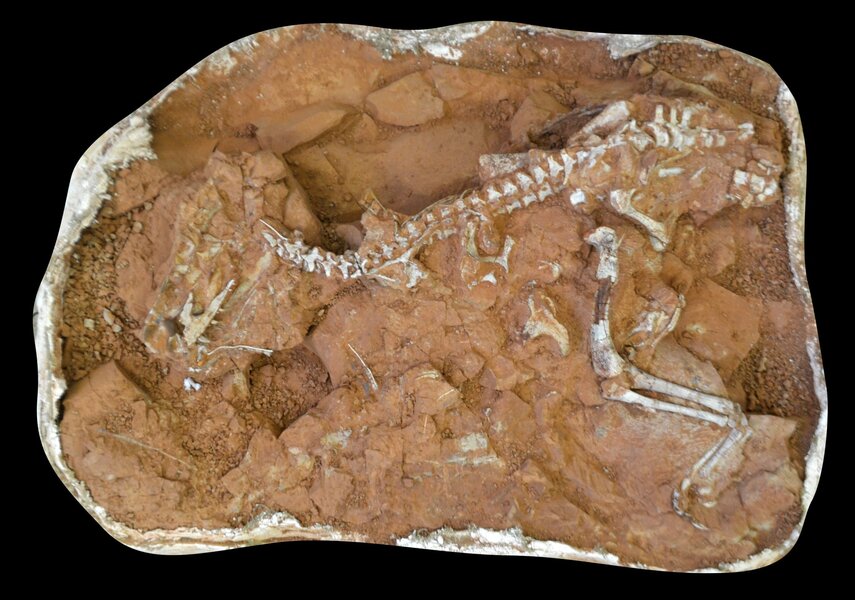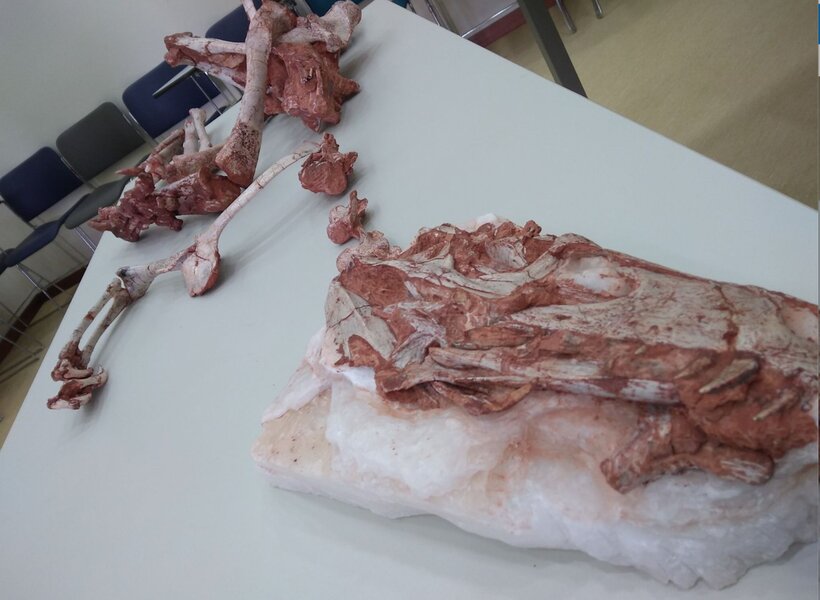Create a free profile to get unlimited access to exclusive videos, sweepstakes, and more!
This Brazilian brute is one of the oldest carnivorous dinosaurs ever found
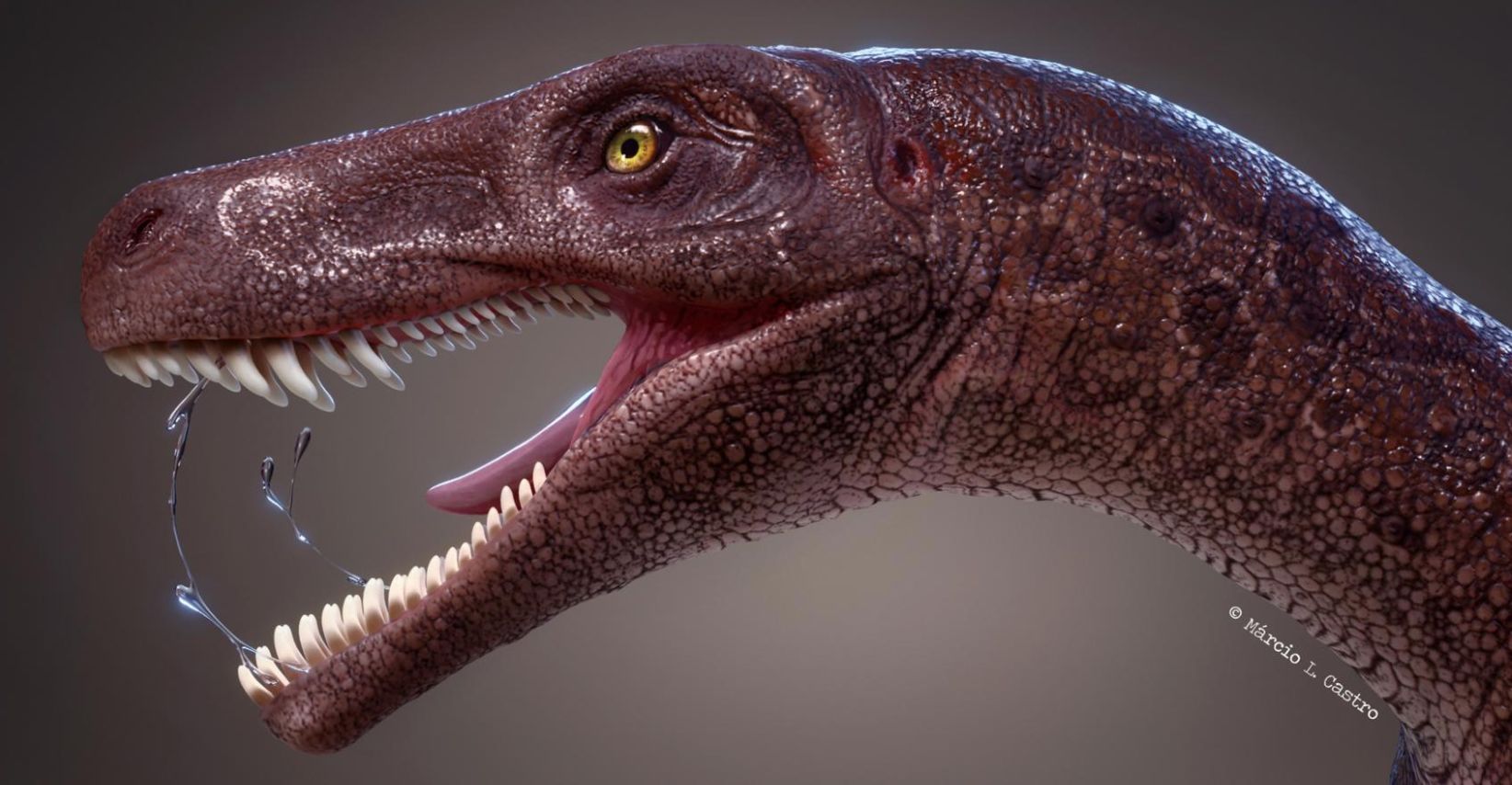
Digging around in the dirt for prehistoric treasures can be a painstaking task for dino-hunters, but the rewards of their labors can be extremely gratifying, especially when you discover something nobody else has ever encountered, even though you might not realize it at the time.
Back in 2014, Brazilian paleontologist Rodrigo Temp Muller was working at an excavation site near the southern Brazilian town of São João do Polêsinea when his crew delivered the first photos of a valuable new fossil find.
This momentous unearthing turned out to be the remains of one of the oldest carnivorous dinosaurs known in the world, dating back to the Triassic Period some 230 million years ago. Now officially identified and named Gnathovorax cabreirai, this ferocious creature resided in a lush forested area back when South America was still linked to the supercontinent of Pangaea.
According to the new study published by Muller and colleagues from the Federal University of Santa Maria and the University of São Paulo in the online journal Peer J, one of the amazing aspects of this discovery is the fact that this animal perished in a muddy flood plain, which allowed sediment from a local river to bury its skeleton and create a perfectly intact fossil.
"This find is really exceptional in response to a combination of factors," Muller tells SYFY WIRE. "First, the new dinosaur was exhumed from the oldest dinosaur-bearing beds worldwide, about 233 million years old. Second, Gnathovorax cabreirai was a predatory dinosaur. Therefore, this dinosaur played an important role in the Triassic ecosystems. Skeletons of predatory dinosaurs are rarer than those of herbivorous ones. Finally, the fossilized skeleton of the new dinosaur is impressively well preserved. There are almost all the bones and it preserved muscle scars and delicate structures. Moreover, the bones do not suffer significant sedimentary compression, so the bones are not distorted."
This rare set of dinosaur bones included an undamaged brain case, which let the team reconstruct the toothy beast's gray matter with CT scans. Utilizing this process, the endocranial soft tissues were reconstructed, unveiling certain aspects of the creature's neuroanatomy previously left unexplored in this branch of dinosaurs. Conclusions found that this species was an active terrestrial predator with excellent vision, focus, and balance — assets which helped it use its jagged teeth and elongated claws to expertly snare prey.
The meat-eating beast measured out at nearly 10 feet long, giving it the distinction of being the biggest Brazilian dinosaur of its time. This intimidating apex predator of the Triassic hunted down ancestors of today’s mammals called cynodonts, and belongs to an early family of carnivorous dinosaurs called Herrerasauridae, which were among the first dinosaurs known to exist.
"The name 'Gnathovorax' means ravenous jaws, referring to the feeding behavior of the new dinosaur," Muller explains. "We believe that Gnathovorax was an active predator that hunted and sliced other reptiles and mammalian ancestors. The name 'cabreirai' refers to the Brazilian paleontologist Dr. Sérgio Furtado Cabreira, the man responsible for finding the first bone (the femur, a leg bone) of this dinosaur."
Laying beside the Gnathovorax bones, paleontologists on the project uncovered skeletons of two rhynchosaurs, smaller Triassic reptiles that were probably part of the animal's dinner, and a pair of tiny cynodonts.
Until now, scientists have amassed a great database concerning more commonly known giant predatory dinosaurs from the Jurassic and Cretaceous; however, their early evolutionary history is still not clearly grasped due to the rarity of earlier fossils. This latest discovery may shed new light on that mysterious topic.
